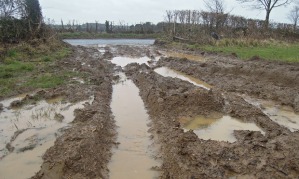Field investigations between 2002 and 2011 identified soil structural degradation to be widespread in SW England with 38% of the 3243 surveyed sites having sufficiently degraded soil structure to produce observable features of enhanced surface-water runoff within the landscape. Soil under arable crops often had high or severe levels of structural degradation. Late-harvested crops such as maize had the most damaged soil where 75% of sites were found to have degraded structure generating enhanced surface-water runoff. Soil erosion in these crops was found at over one in five sites. A tendency for the establishment of winter cereals in late autumn in the South West also often resulted in damaged soil where degraded structure and enhanced surface-water runoff were found in three of every five cereal fields. Remedial actions to improve soil structure are either not being undertaken or are being unsuccessfully used. Brown Sands, Brown Earths and loamy Stagnogley Soils were the most frequently damaged soils. The intensive use of well-drained, high quality sandy and coarse loamy soils has led to soil structural damage resulting in enhanced surface-water runoff from fields that should naturally absorb winter rain. Surface water pollution, localised flooding and reduced winter recharge rates to result from this damage. Chalk and limestone landscapes on the other hand show little evidence of serious soil structural degradation and <20% of fields in these landscapes generate enhanced runoff.
LINK: http://onlinelibrary.wiley.com/doi/10.1111/sum.12068/abstract
STUDY: http://eureferendum.com/documents/sum12068.pdf
DIRECT DOWNLOAD: https://planetpermaculture.files.wordpress.com/2015/04/sum12068.pdf
